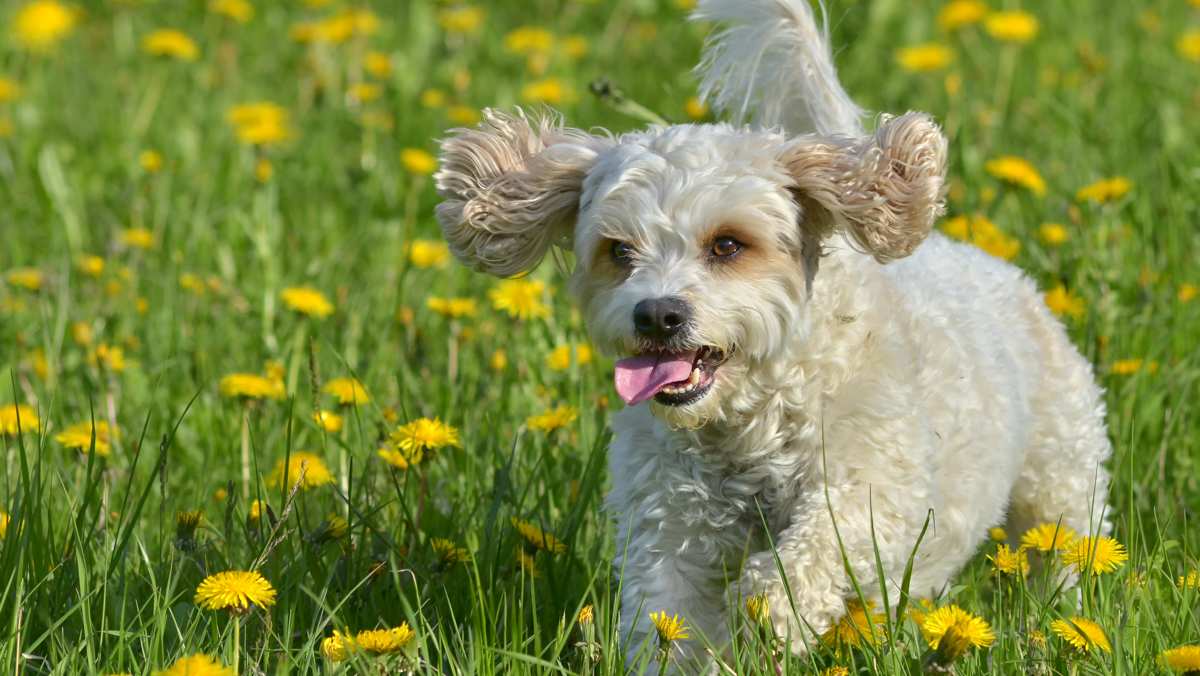Havamalt Breed Details
Below are the details and specs of the Havamalt dog breed.

The Havamalt is a hybrid dog that is a cross between a Havanese and a Maltese. They are extraordinarily cute, cuddly, and joyful pets. They are intelligent and get along great with kids, families, and can be civilized with other pets. They strive to please their masters. They can be easily trained with positive reinforcement, and are naturally healthy dogs.
Below are the details and specs of the Havamalt dog breed.
Havamalts are small-sized dogs, with a height that ranges between 8 and 11 inches and a weight ranging between 13 and 16 pounds. This breed has an average life expectancy of 15 years.
This breed is moderately active, only requiring daily exercises and games. They are very easy to train and get along great with kids, families, and can be civilized with other pets. Havamalts thrive upon pleasing others and receiving praise.
Havamalts are moderate to high-maintenance dogs. Though they have low to no shedding, frequent brushing is necessary to maintain their coats. This breed should be bathed and shampooed occasionally, with their eyes and ears regularly checked. Havamalts do not do well when separated for long periods of time and are prone to separation anxiety. They are naturally healthy dogs.
As a hybrid dog, the havamalt does not have a significant official history. They were likely first bred in the 1980's when crossbreed dogs became popular.
One of the parent breeds that make the Havamalt is the Havanese. Havanese are the national dog of Cuba, and is the only native breed. Their journey was most likely aboard trade ships that were sailing from the island of Tenerife in the early 16th century. At that time, the Cuban trade was highly restricted by the Spanish, so Tenerife was one of the only open ports during that period. These dogs found their way into the homes of Cuban aristocracy and were developed without much outside influence.
The other parent breed, the Maltese, is the ancient dog of Malta and were bred to attain their small size. The Greeks erected tombs to their Maltese, as depicted on their early ceramic art. Paintings of Maltese were evident as early as the fifth century. Some evidence suggests that this breed originated in Asia, relating to to the Tibetan Terrier. Though their exact origin is unknown, they have been aristocrats of the canine world for more than 28 years.
Havamalts have a silky outer coat and a coarser inner coat. They have short bodies, with almond-shaped black eyes and a medium tale and muzzle. This breed has an overall nice appearance.
Consult your breeder for subtle or not-so-subtle differences between each generation of Havamalts. When a purebred Maltese and purebred Havanese are mated you produces the first generation of hybrid Havamalt puppies (F1). Two F1 Havamalt hybrids bred together will produce an F2 Havamalt, while two F2s will produce an F3..and so on. The F1B and F2B generations are referred to as "back crosses" where a breeder takes either an F1 or F2 Havamalt and breeds him/her with a purebred Havanese or purebred Maltese; this strengthens certain traits that the breeder wishes to strengthen in temperament or looks.
Havamalts are extremely cute, cuddly, and joyful pets. They are highly intelligent, devoted, and good-natured dogs. They feel a lot of joy around their owners, and respond best to owners that share a similar loving personality. They are very gentle and very much enjoy companionship, getting along exceptionally well with children.
This breed does not show overt aggression, and thrives in pleasing their masters. They may inherit the quality of completing tasks in a joyful manner from its Havanese parent, which was used as a circus canine in the past. This breed is cheerful, social, sweet, and docile.
The Havamalt is a moderate to high maintenance dog, primarily because they need to be combed and brushed on a regular basis. They are very lively and active, and sufficient exercise and activities are needed to keep this breed happy and healthy. They cannot be left alone for long periods of time, mainly because they may suffer separation anxiety when separated from their owners.
Havamalts have silky hair that requires daily brushing. They need to be bathed and shampooed regularly along with with daily combing. Trimming of their hairs is needed from time to time. They are low to non-shedding, but their ears and eyes should be checked on a regular basis to prevent infections.
This breed has lively, healthy, and playful qualities. They need daily exercises and games, and this can include walks and fast runs. They are strong-willed dogs with high endurance, so it is important to give them adequate exercise and attention to prevent them from developing bad habits.
Havamalts enjoy being around family. They cannot be left alone, nor do they do well when separated for long periods of time. It is important for anyone interested in having a Havamalt be present to keep them entertained and busy. This breed does best living inside.
Havamalts are naturally healthy dogs, though they can be victim to common health issues such as hip dysplasia and ear infections.
Below is a complete list of health issues common in Havamalts.
Below are potential health concerns associated with Havamalts.